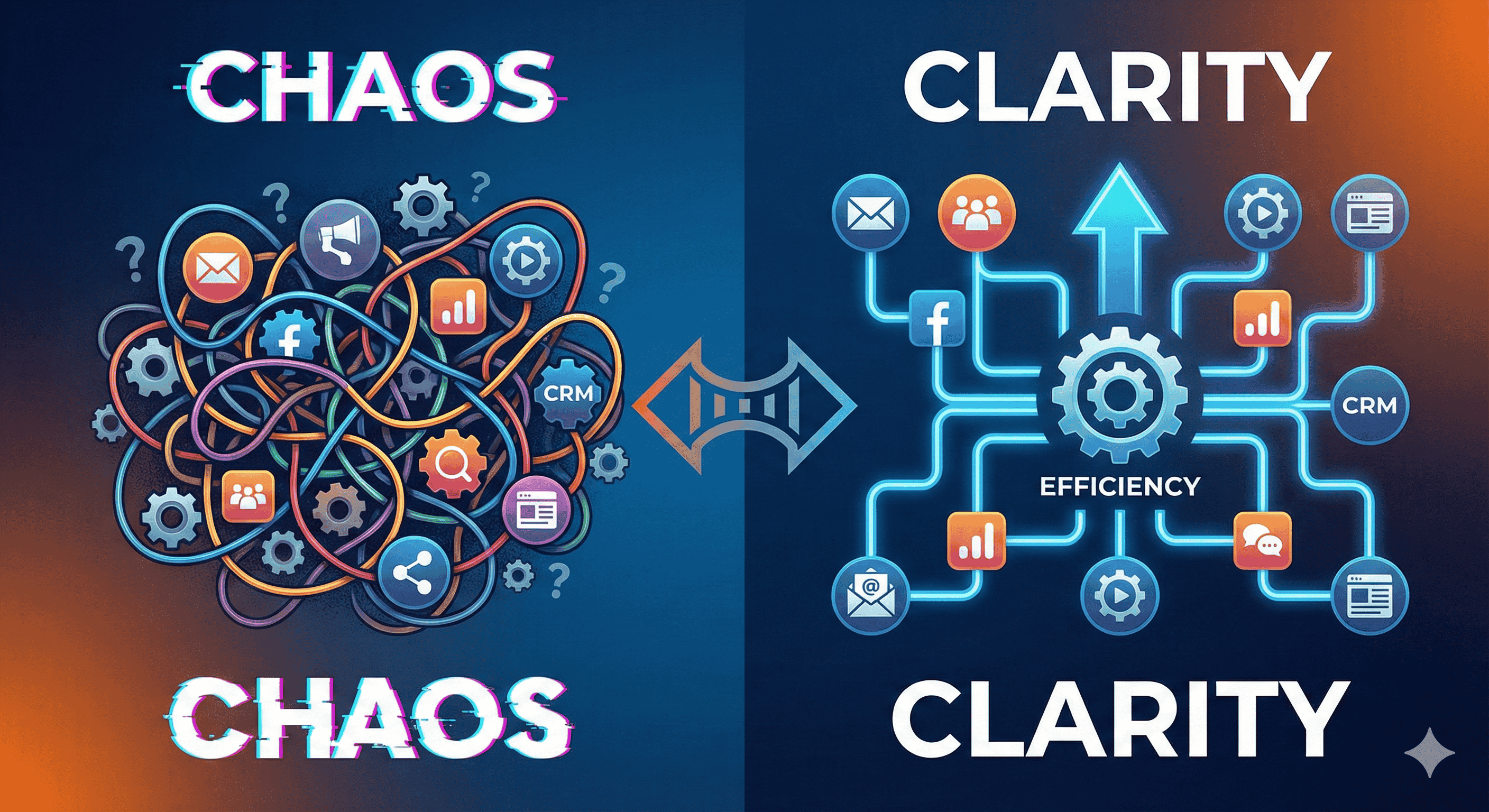In today’s fast-paced digital landscape, marketing teams are faced with a conundrum: the more technology they adopt to enhance their efforts, the more chaotic their operations can become. With numerous tools available, each claiming to boost productivity and improve results, many businesses find themselves overwhelmed rather than empowered. The solution lies in streamlining your marketing tech stack, transforming chaos into clarity.
Understanding the Marketing Tech Stack
A marketing tech stack refers to the collection of technologies and tools that a marketing team uses to plan, execute, and analyze their marketing campaigns. This can include tools for:
- Content Management: Blogs, websites, and landing pages.
- Email Marketing: Automation and segmentation tools.
- Analytics: Tools for measuring and analyzing campaign performance.
- Social Media Management: Scheduling, monitoring, and analytics platforms.
- Customer Relationship Management (CRM): Systems for managing interactions with customers and prospects.
The Challenge of Complexity
While the integration of multiple platforms can enhance efficiency, it often leads to disorganization and misalignment within teams. Common challenges include:
- Data Silos: Information trapped in different platforms can lead to inconsistent messaging and customer experiences.
- Redundant Tools: Multiple tools serving similar purposes can cause confusion and inefficiency.
- Integration Issues: Tools that don’t communicate well can hinder workflow and slow down processes.
- User Overload: Team members might struggle to navigate a complicated array of tools, leading to errors and frustration.
Steps to Streamline Your Marketing Tech Stack
1. Assess Your Current Tools
Conduct a comprehensive evaluation of your existing tech stack. Identify which tools are actively used, which tools are redundant, and which are underutilized. This assessment can provide a clear picture of where chaos arises and where consolidation is possible.
2. Identify Core Needs
Determine your team’s primary marketing objectives. Are you focused on lead generation, brand awareness, customer retention, or all three? Understanding these goals is crucial in selecting the right tools that align with your strategy.
3. Focus on Integration
Choose tools that seamlessly integrate with each other. Effective integration allows for a unified approach to data management, helping mitigate the data silos issue. Look for platforms that offer built-in integrations or open APIs that enable smooth data sharing.
4. Prioritize User Experience
Select tools that are user-friendly and require minimal training. A complicated tool can hinder productivity and lead to a steep learning curve. Opt for platforms that provide excellent customer support, resources, and communities for assistance.
5. Adopt an Agile Approach
Marketing technology is constantly evolving. Regularly revisit your tech stack and remain agile. Be open to adopting new tools or phasing out those that no longer serve your goals. Staying updated with industry trends will help you adapt and innovate.
6. Measure and Optimize
Implement analytics to measure the effectiveness of your tech stack. Pay attention to KPIs that matter most to your marketing goals, such as conversion rates, ROI, and customer engagement metrics. Use this data to adjust and optimize your stack for better performance.
The Benefits of a Streamlined Tech Stack
When you take the time to streamline your marketing tech stack, the benefits can be substantial:
- Increased Efficiency: With fewer tools, your team can spend more time focusing on strategy and execution rather than managing interfaces.
- Enhanced Collaboration: A unified tech stack allows for better communication and collaboration among team members.
- Improved Data Insights: With integrated tools, data is more accessible and easier to analyze, providing actionable insights that drive strategic decisions.
- Cost Savings: Eliminating redundant tools can lead to significant cost reductions, freeing up budget for more impactful initiatives.
Conclusion
Transforming your marketing tech stack from chaos to clarity requires a well-considered approach. By assessing your current tools, identifying your core needs, and prioritizing integration and user experience, you can create a streamlined suite of technologies that empowers your marketing team. In doing so, you’ll not only enhance productivity and collaboration but also position your organization to respond adeptly to the rapidly evolving landscape of digital marketing. Embrace the shift towards clarity, and watch your marketing efforts thrive.







